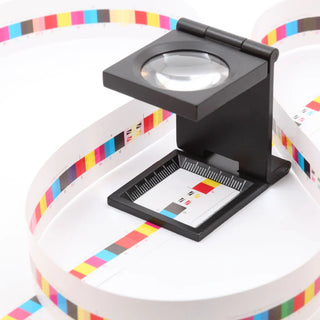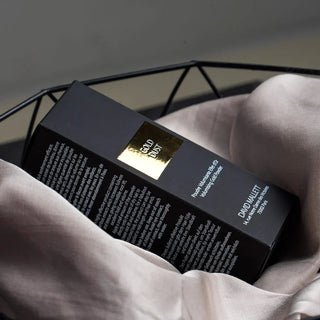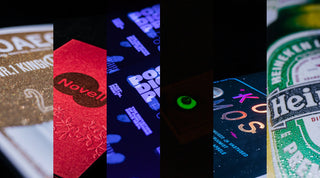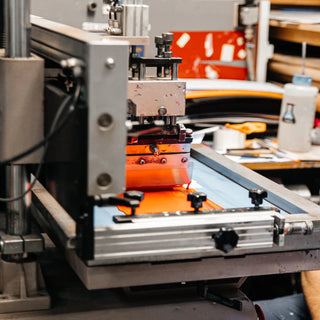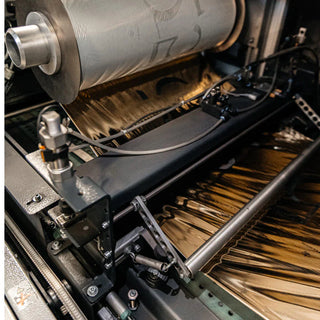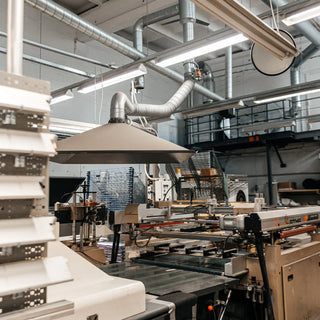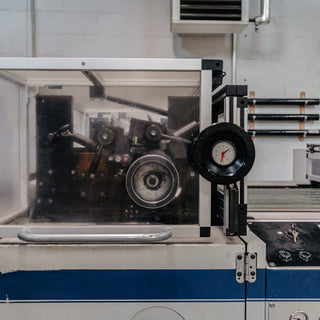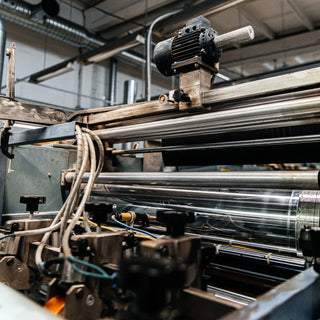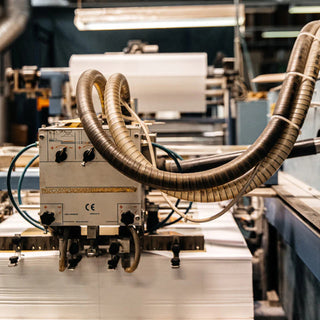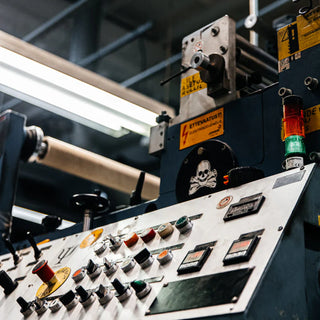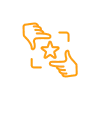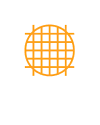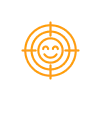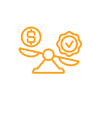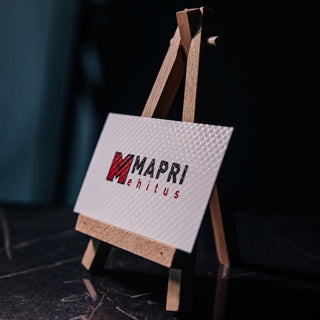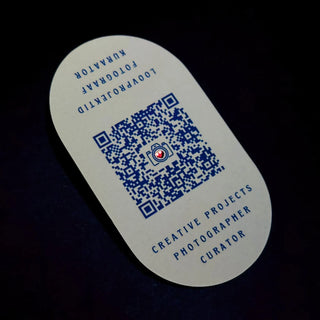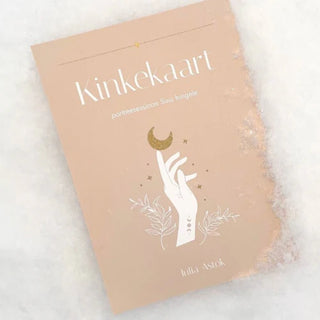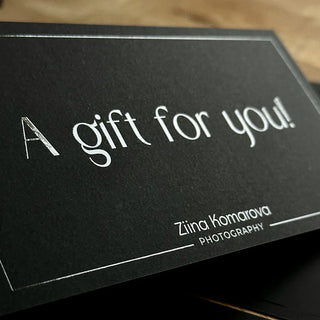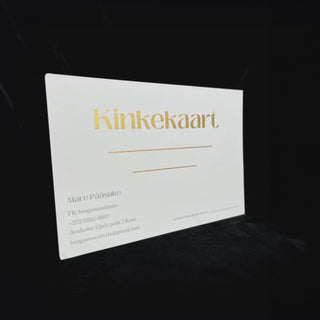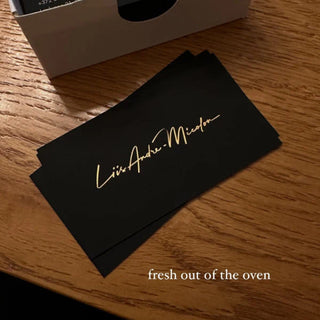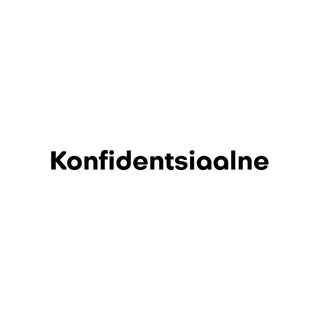Screen printing, as the Estonian name suggests, is one of the oldest printing methods, which was originally done through silk, but nowadays it has been electronically stretched onto aluminum frames with high-tech mesh for decades, and instead of manual squeegee pulling, it's done with semi and fully automatic machines. Images on the mesh (through which the ink or varnish passes) are created through almost an hour-long process of applying photochemicals, exposure, washing and drying.
That's why it's more expensive than other printing methods, but also an exclusive printing method, whose strengths are very even surface and ultra-perfect edge printed images, where it's always possible to guarantee the same tone print, since this is the only printing method that doesn't print through 4 colors, i.e., CMYK.
Additionally, this is the only printing method through which it's possible to print very bright, including neon, and many special gold and silver colors, which are never possible with other color technologies. For example, there are glossy, matte, sparkling gold and silver colors available, with which documents, invitations and business cards of the Republic's President and Prime Minister's office have been printed with gold in Estonia to achieve copy protection, the Bank of Estonia's with silver, etc.
Screen printing also uniquely offers dozens of printing effects, which are mostly based on UV varnish technology. From regular glossy to relief and matte spot varnish, plus uncoated paper varnish, bubble and sand surface, glow-in-the-dark and money lamp glowing security varnish. Here begin the additive-based ones, for example, a huge color range of glitter selection that you're used to seeing on postcards and Disney prints, plus pearl additive varnish, tintable varnish and lottery colors. Screen printing's weakness is raster printing quality - actually it can be done, but the raster dot is just very large at 65LPI. However, many designers successfully use this to their advantage. The next strength is definitely the ability to print on almost all flat materials from paper, cardboard, design papers, to plastic, glass and metal.
For example, we print dial plates for Estonian handmade watches, casings for Estonian unique product prototypes (such as hydrogen generators), front panels for Swedish equipment, so-called dome labels for Estonian embassies and offices, to coat of arms stickers for Estonian and Latvian border posts, in the paper direction we reproduce Estonian and Finnish artists' works, produce menus, printing effects for book and magazine covers or 100% book cover images on book covering materials, not to mention hundreds of packages, product sleeves, hang tags, product labels, to personalized product solutions. And we do this with top equipment from Japan and Taiwan. For example, when printing white on dark materials, design papers, book covering materials, etc., screen printing has no match among other printing methods in terms of coverage.
A separate topic is direct printing on stickers and plastic. Although it's 2x more expensive than digital printing, the result is very durable and weather, UV and color change resistant with a smooth surface that's easily cleanable, including with household chemicals. Since digital print surface is rough (CMYK) due to raster, dirt accumulates there more easily and cleaning it is difficult and rather just removes part of the print, also most digital prints aren't UV and weather resistant. This can be solved with lamination, but then it already approaches screen printing price class and is eventually almost the same due to lamination film fraying.
For direct printing on plastic and for example magnetic stickers, there's no direct competitor to screen printing in the digital printing world, since you don't laminate them to make them easily cleanable and color change/weather resistant. Consequently, in Estonia, in addition to the mentioned Estonian and Latvian border post stickers, we also print stickers for ships, trash cans, sea containers, etc., and the paradox is, for example, control stickers on the back of traffic signs, which then logically live longer than traffic signs produced with digital technology. A very large part of magnetic stickers, especially triangular signs for driving school cars, have started their life journey from our hands. Direct to plastic we produce from signs hanging from ceilings in shopping centers to safety signs. We produce a very considerable amount of fire and work safety signage and stickers for Sweden and Finland.
The whole point of this blog wasn't to put down digital printing but based on the print's age and purpose, you simply need to choose a reasonable solution. For example, for short-term trade fair and event stickers, screen printing would be an obvious waste of time, money and also natural resources. And naturally, we also offer digital printing products for such and other cases where it justifies itself.
Life experience has shown that some clients go straight to digital printing for outdoor and durability prints due to price, but without commenting anything, they already order the same thing in screen printing within 1-2 years, and then we don't meet again for 3-5 years, depending on how long the lifespan of the chosen base material was.

